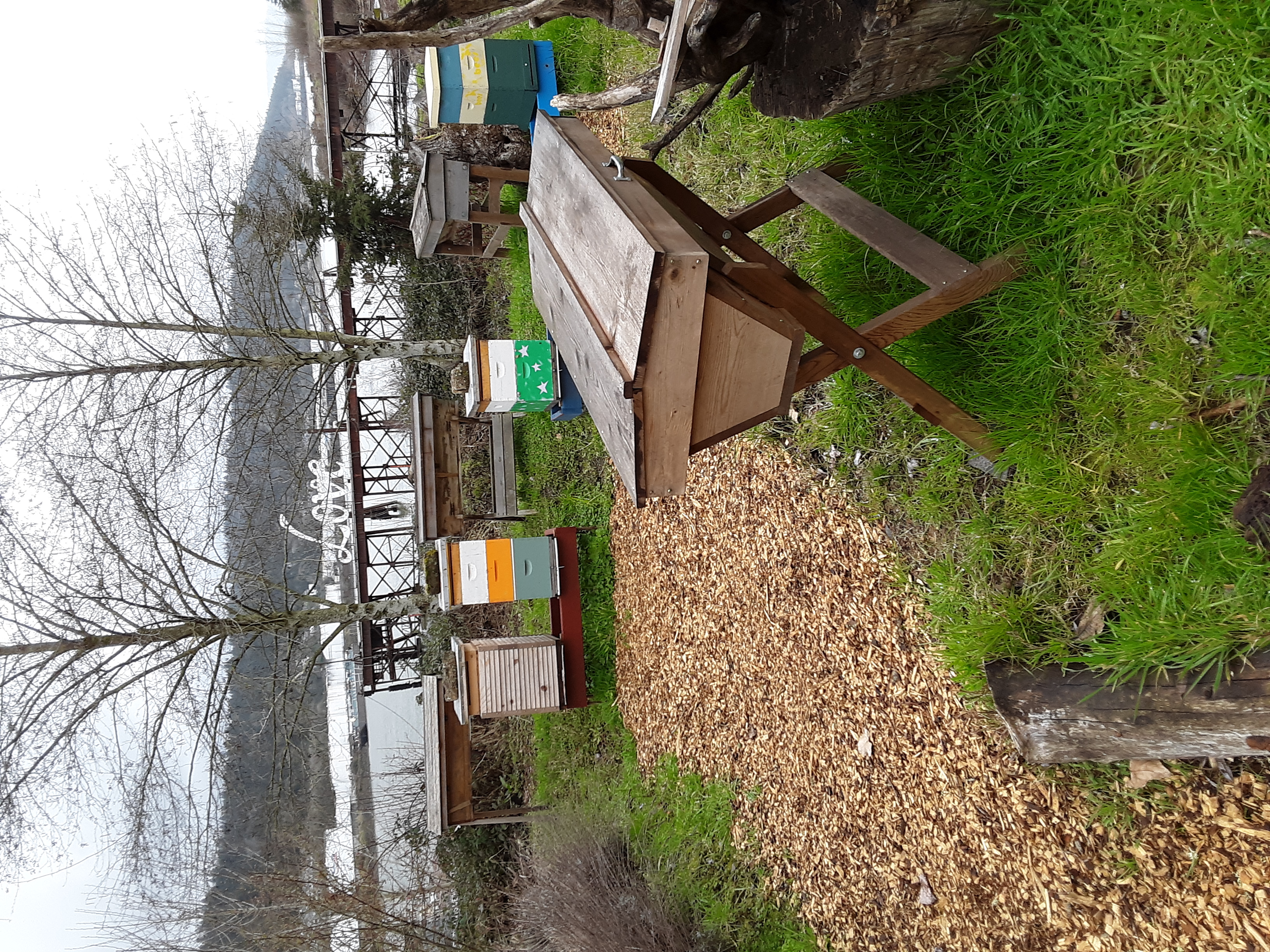Frenzied flight activity with bees attempting to enter hives at holes in corners, holes provided by the beekeeper for ventilation, at any entrances, beneath the covers, and even at cracks between hive boxes. Robbing bee flight needs to be distinguished from normal flight, especially from orientation flights or drone mating flights.
Robbing is behavior of bees attempting to enter a hive other than their own to steal food stores. Robbing bees will attempt to enter hives at multiple openings. Robbing might occur at weaker colonies with insufficient guard bee numbers or hives disturbed by beekeeper inspection. Robbers enter hives with much initial fighting but then overwhelm the targeted colony. Bees from the robbed colony may overheat and die from heat exhaustion.
Robbing is thought to be a major means of horizontal mite transfer from one colony to another in apiariesapiary:
a place where beehives and beekeeping equipment are located; also called a bee yard. An out-apiary is a site away from the owner’s residence. .
.
A robbing screen can be placed in front of the colony entrance to reduce the possibility of robbing occurring. Foraging bees can exit their hive while the robbers focus their attempted entry on a screened opening.
orientation flights; drone mating flight
Willingham R, Klopchin J, and Ellis J. 2021. Robbing Behavior in Honey Bees. University of Florida/IFAS Extension ENY-163. https://edis.ifas.ufl.edu/publication/IN1064
“Honey Bees Exhibiting Intensive Robbing Behavior”. YouTube, uploaded by James E. Tew, 1 April 2021. https://www.youtube.com/watch?v=SFf7zy32t7E
Carter A. n.d. How to Stop Robbing Bees. Beekeeping Insider. Accessed 2023. https://beekeepinginsider.com /how-to-stop-robbing-bees/
Caron DM and Connor LJ. 2022. Honey Bee Biology and Beekeeping, Third Edition, Chapter 10. Wicwas Press, Kalamazoo, MI, US. 480 pages.